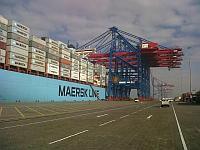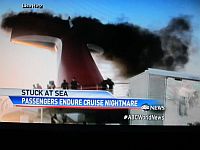 There is a fire in one of two engine rooms on a cruise ship. The fire is extinguished but the damage has been done. The cruise ship blacks out – losing power and most electricity. The ship is adrift in the ocean. There is so hot food, hot water, or air conditioning for the several thousand passengers and crew aboard the ship. Conditions aboard become extremely uncomfortable as sewage systems back up, food in refrigerators rot, and the temperatures below decks become sweltering. Finally, tugs are hired to tow the ship into the nearest port.
There is a fire in one of two engine rooms on a cruise ship. The fire is extinguished but the damage has been done. The cruise ship blacks out – losing power and most electricity. The ship is adrift in the ocean. There is so hot food, hot water, or air conditioning for the several thousand passengers and crew aboard the ship. Conditions aboard become extremely uncomfortable as sewage systems back up, food in refrigerators rot, and the temperatures below decks become sweltering. Finally, tugs are hired to tow the ship into the nearest port.
This could be a description of what is currently happening on the Carnival Triumph, which is now being towed to Mobile, Alabama. It could also equally be an account of what happened on the Carnival Spendor in the Pacific in late 2010, or the Ocean Star Pacific off Mexico in April 2011, or the MSC Opera in the Baltic in June of 2011 or the Costa Allure off the Seychelles in February of 2012. The same thing almost happened on the Azamara Quest off the Philipines in March of 2012. After drifting for 24 hours, the crew was able to restore partial power and electricity and the Azamara Quest was able to make it to port on its own.
The design of each of these cruise ships should make the complete loss of propulsion and main generators due to a single engine fire impossible, yet with six ships disabled in just over two years, the failures are not only possible but apparently chronic.
Continue reading →

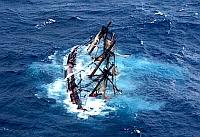
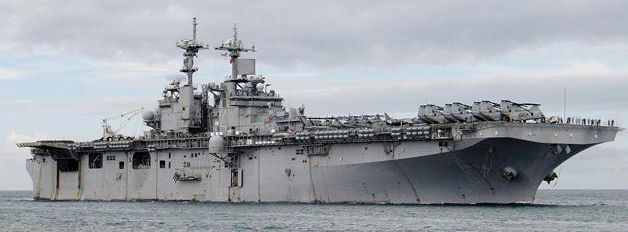 There is virtually no place on earth beyond its reach. No, not the US Navy. Starbucks. The coffee seller is now even opening a store on a navy warship, the amphibious assault ship,
There is virtually no place on earth beyond its reach. No, not the US Navy. Starbucks. The coffee seller is now even opening a store on a navy warship, the amphibious assault ship,  There is a fire in one of two engine rooms on a cruise ship. The fire is extinguished but the damage has been done. The cruise ship blacks out – losing power and most electricity. The ship is adrift in the ocean. There is so hot food, hot water, or air conditioning for the several thousand passengers and crew aboard the ship. Conditions aboard become extremely uncomfortable as sewage systems back up, food in refrigerators rot, and the temperatures below decks become sweltering. Finally, tugs are hired to tow the ship into the nearest port.
There is a fire in one of two engine rooms on a cruise ship. The fire is extinguished but the damage has been done. The cruise ship blacks out – losing power and most electricity. The ship is adrift in the ocean. There is so hot food, hot water, or air conditioning for the several thousand passengers and crew aboard the ship. Conditions aboard become extremely uncomfortable as sewage systems back up, food in refrigerators rot, and the temperatures below decks become sweltering. Finally, tugs are hired to tow the ship into the nearest port. An engine room fire has knocked out the propulsion and the primary electrical system on the cruise ship Carnival Triumph in the Gulf of Mexico off the Yucatan Peninsula. Emergency generators are providing limited power to the passenger areas. The ship will be towed to to Progreso, Mexico and is expected to arrive on Wednesday. There have been no reported injuries among the 4,000 passengers and crew reported to be aboard the ship. Carnival Triumph is a post-Panamax Destiny/Triumph-class cruise ship, built in 1999, operated by Carnival Cruise Lines, sailing on 4 and 5 day voyages from Galveston, Texas to the Western Caribbean. Thanks to Phil Leon for contributing to the post.
An engine room fire has knocked out the propulsion and the primary electrical system on the cruise ship Carnival Triumph in the Gulf of Mexico off the Yucatan Peninsula. Emergency generators are providing limited power to the passenger areas. The ship will be towed to to Progreso, Mexico and is expected to arrive on Wednesday. There have been no reported injuries among the 4,000 passengers and crew reported to be aboard the ship. Carnival Triumph is a post-Panamax Destiny/Triumph-class cruise ship, built in 1999, operated by Carnival Cruise Lines, sailing on 4 and 5 day voyages from Galveston, Texas to the Western Caribbean. Thanks to Phil Leon for contributing to the post.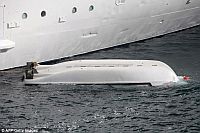 Five crew members on the cruise ship
Five crew members on the cruise ship  Today is
Today is 
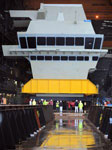
 In late January
In late January 

